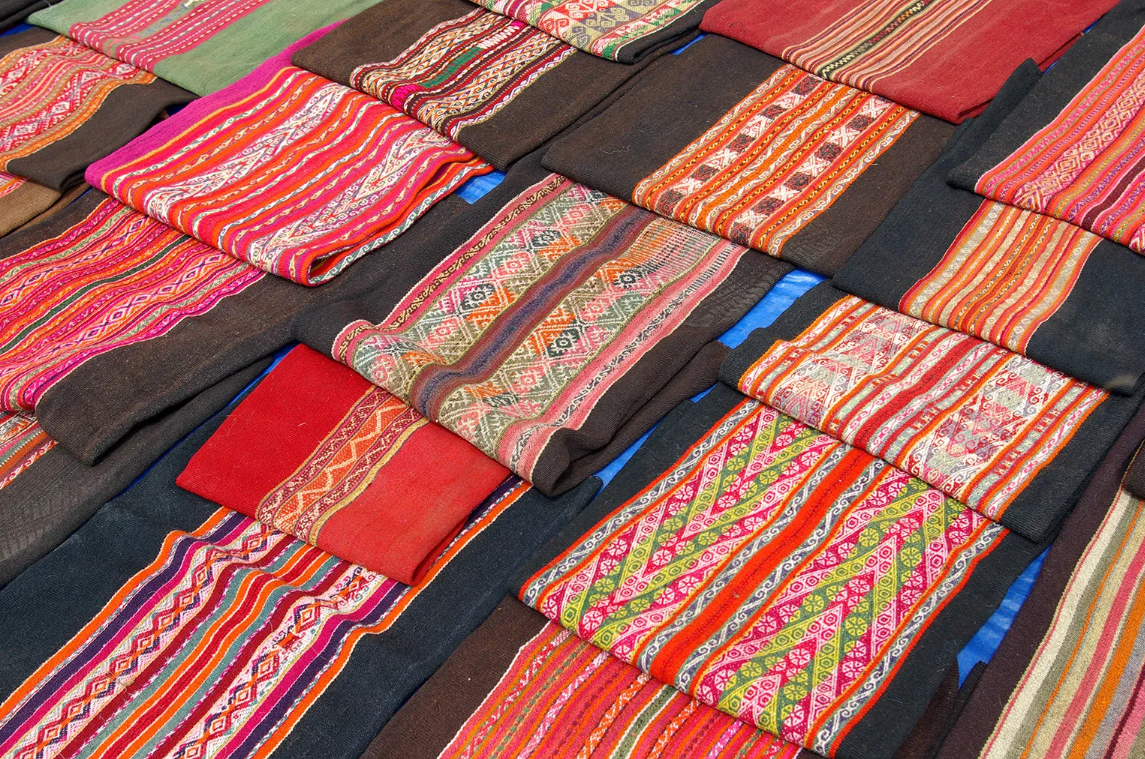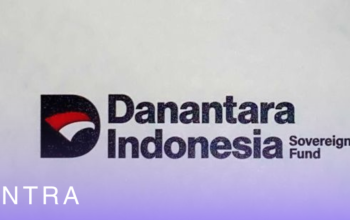Sentra-Textile Imports to Plunge in, industry in Indonesia, a vital sector for the nation’s economy, has experienced a significant downturn at the start of 2024. The phrase “Impor Tekstil Anjlok” has become a trending topic among industry stakeholders and economists, highlighting the sharp decline in textile imports during this period. This article delves into the factors contributing to this decline, its implications for the Indonesian economy, and potential strategies to mitigate the impact.
Understanding the Decline in Textile Imports
The decline in textile imports at the beginning of 2024, encapsulated by the keyword “Impor Tekstil Anjlok,” reflects a multifaceted phenomenon influenced by both global and domestic factors.
- Global Economic Slowdown: The global economy has entered a phase of sluggish growth, impacting consumer spending patterns worldwide. As consumer demand for textiles decreases in major markets, the need for imports naturally diminishes.
- Supply Chain Disruptions: Persistent disruptions in global supply chains have further exacerbated the decline in textile imports. These disruptions stem from a variety of issues, including geopolitical tensions, logistical bottlenecks, and delays in transportation.
- Currency Volatility: The volatility of the Indonesian Rupiah against major currencies has played a pivotal role in the reduction of textile imports. A weaker Rupiah makes importing goods more expensive, prompting businesses to either reduce their import volumes or seek alternative sourcing strategies.
- Shift towards Domestic Production: Indonesian authorities have increasingly focused on promoting domestic production of textiles. Policies aimed at incentivizing local manufacturing and reducing dependency on imports have led to a gradual shift in sourcing preferences among businesses.
- Changing Consumer Preferences: Evolving consumer preferences towards sustainable and locally-produced goods have also influenced the decline in textile imports. This trend aligns with global movements towards ethical sourcing and environmental sustainability.
Implications for the Indonesian Economy
The decrease in textile imports carries significant implications for Indonesia’s economy:
- Employment Impact: The textile industry is a major employer in Indonesia, providing livelihoods to a substantial portion of the population. A decline in imports can lead to reduced production levels and potential job losses within the sector.
- Inflationary Pressures: A reduction in imported textiles may contribute to inflationary pressures within the domestic market, especially if local production capacities are unable to meet consumer demand.
- Trade Balance Dynamics: While a decrease in imports can initially improve the trade balance by reducing import expenditures, it also underscores the need for robust domestic production capabilities to sustain long-term economic stability.
Strategic Responses to Mitigate the Decline
To address the challenges posed by the decline in textile imports, strategic responses include:
- Investment in Domestic Industry: Increasing investment in technology, infrastructure, and skills development within the domestic textile sector can enhance production efficiencies and competitiveness.
- Diversification of Trade Partnerships: Expanding trade relationships with diverse markets can mitigate risks associated with dependency on any single region or economy.
- Currency Management Strategies: Implementing policies to stabilize the Rupiah against major currencies can mitigate the impact of currency fluctuations on import costs.
- Promotion of Innovation and Sustainability: Encouraging innovation in textile manufacturing processes and promoting sustainable practices can create new opportunities for growth and differentiation in the global market.
The decline in textile imports, as observed at the onset of 2024, underscores the need for proactive measures to strengthen Indonesia’s textile industry. By addressing the root causes through strategic investments, policy interventions, and market diversification, Indonesia can navigate these challenges and foster a resilient textile sector capable of sustaining long-term economic growth and stability. As global economic conditions continue to evolve, continued vigilance and adaptability will be crucial in ensuring Indonesia’s competitiveness in the international textile market.
Implications for the Indonesian Economy
The decline in textile imports, symbolized by the phrase “Impor Tekstil Anjlok,” carries significant ramifications for Indonesia’s broader economic landscape across various sectors and stakeholders.
- Employment and Labor Market Dynamics: The textile industry is a crucial source of employment in Indonesia, particularly for semi-skilled and skilled laborers. A reduction in textile imports can directly impact employment levels within the sector. As businesses scale back on imports due to economic pressures or policy shifts favoring domestic production, job opportunities may decline. This could potentially lead to higher unemployment rates and strain on social welfare systems, particularly in regions heavily reliant on textile manufacturing.
- Inflationary Pressures: The decrease in textile imports can influence inflationary trends within the Indonesian economy. Textiles are fundamental to various consumer goods, including clothing and household textiles. Reduced availability of imported textiles could lead to higher prices for these products domestically, especially if local production capacities are unable to meet consumer demand. Such price increases could affect household budgets and consumer spending patterns, thereby impacting overall economic growth.
- Trade Balance and Current Account Deficit: Indonesia’s trade balance is intricately linked to its import and export activities. While a decrease in textile imports may initially improve the trade balance by reducing import expenditures, it also highlights the broader implications for the country’s current account deficit. Textiles are a significant component of Indonesia’s import basket, and any sustained decline could affect the overall balance of trade, potentially influencing currency valuations and external financing requirements.
- Sectoral Competitiveness and Economic Resilience: The textile industry’s performance reflects broader issues of sectoral competitiveness and economic resilience. A decline in imports underscores the imperative for Indonesia to strengthen its domestic manufacturing capabilities, enhance productivity, and innovate within the textile sector. Policies that support technology adoption, skills development, and sustainable practices can bolster the industry’s ability to compete globally and withstand external economic shocks.
- Policy and Economic Stability: The decline in textile imports necessitates careful policy responses to maintain economic stability. Government interventions may include targeted subsidies, trade diversification strategies, and currency management measures to mitigate the impact on affected industries and support overall economic growth. Ensuring policy coherence and responsiveness to changing economic conditions will be crucial in navigating the challenges posed by reduced textile imports.
The implications of declining textile imports, encapsulated by the keyword “Impor Tekstil Anjlok,” extend beyond the immediate sectoral impact to broader economic dimensions in Indonesia. Addressing these implications requires a strategic approach that balances short-term adjustments with long-term structural reforms aimed at enhancing competitiveness, fostering innovation, and promoting sustainable economic development. By leveraging strengths and addressing vulnerabilities, Indonesia can navigate the challenges posed by reduced textile imports and position itself for resilient economic growth in a dynamic global landscape.
Strategic Responses to Mitigate the Decline in Textile Imports
The decline in textile imports at the beginning of 2024, represented by the keyword “Impor Tekstil Anjlok,” necessitates proactive strategies and responses from stakeholders in Indonesia. These strategic measures are essential to mitigate the immediate impacts and position the country’s textile industry for sustainable growth and resilience.
- Investment in Domestic Industry: Increasing investment in the domestic textile industry is paramount to reducing dependency on imports. This includes modernizing manufacturing facilities, adopting advanced technologies such as automation and digitalization, and enhancing workforce skills through training programs. By improving productivity and efficiency, Indonesian textile producers can better compete both domestically and internationally.
- Diversification of Trade Partnerships: Amidst global uncertainties and supply chain disruptions, diversifying trade partnerships becomes crucial. Indonesia can explore new markets and strengthen existing trade relationships with countries that offer stable demand for textiles. Trade agreements and partnerships should be strategically pursued to mitigate risks associated with relying too heavily on any single market or region.
- Currency Management Strategies: Given the impact of currency fluctuations on import costs, implementing effective currency management strategies is essential. Central bank interventions, foreign exchange reserves management, and policies aimed at stabilizing the Indonesian Rupiah against major currencies can help mitigate the cost pressures on imported textiles. This, in turn, supports price stability and competitiveness in the domestic market.
- Promotion of Innovation and Sustainability: Encouraging innovation and sustainability within the textile industry can unlock new opportunities and enhance competitiveness. Initiatives such as promoting eco-friendly production processes, developing sustainable textile materials, and adopting circular economy principles can attract environmentally conscious consumers and global markets. Government incentives and support programs for research and development in textile innovation can further accelerate industry transformation.
- Policy Support and Coordination: Coordinated policy support is essential to create an enabling environment for the textile sector’s growth. This includes transparent regulatory frameworks, streamlined bureaucratic processes for business operations, and targeted incentives for investment in textile manufacturing. Collaborative efforts between government agencies, industry associations, and academic institutions can foster a conducive ecosystem for sustainable industry development.
- Capacity Building and Skills Development: Strengthening human capital within the textile industry through skills development initiatives is crucial. Training programs that enhance technical skills, managerial capabilities, and knowledge in areas such as sustainable practices and digital technologies can empower workforce resilience and adaptability. This not only improves productivity but also prepares the industry for future challenges and opportunities.
The decline in textile imports in early 2024 poses significant challenges but also presents opportunities for Indonesia’s textile sector to evolve and thrive. By implementing strategic responses focused on investment, diversification, currency management, innovation, policy support, and skills development, Indonesia can mitigate the immediate impacts of reduced imports while laying the foundation for a resilient and competitive textile industry. These efforts are essential for sustaining economic growth, creating employment opportunities, and enhancing Indonesia’s position in the global textile market.
Conclusion Textile Imports to Plunge in
The decline in textile imports at the outset of 2024, as highlighted by the phrase “Impor Tekstil Anjlok,” underscores both challenges and opportunities for Indonesia’s economy and textile industry. While the immediate implications include potential job losses, inflationary pressures, and adjustments in trade balances, strategic responses can mitigate these effects and pave the way for sustainable growth.
Strategies such as enhancing domestic industry investment, diversifying trade partnerships, implementing effective currency management, promoting innovation and sustainability, and fostering policy support and coordination are critical. These measures not only address short-term disruptions but also strengthen the textile sector’s long-term competitiveness and resilience against global economic uncertainties.
Moreover, the focus on capacity building through skills development initiatives ensures that Indonesia’s workforce remains adaptable and capable of meeting evolving industry demands. By nurturing a supportive business environment and encouraging technological advancements, Indonesia can position itself as a leader in sustainable textile production and meet international standards.
As Indonesia navigates the challenges posed by reduced textile imports, collaboration among government agencies, industry stakeholders, and educational institutions will be pivotal. By aligning efforts towards sustainable development goals and leveraging opportunities in global markets, Indonesia can emerge stronger and more resilient in the face of economic fluctuations.
In conclusion, while the decline in textile imports presents immediate challenges, it also serves as a catalyst for transformative growth within Indonesia’s textile industry. Through strategic planning, innovation, and collective action, Indonesia can build a robust foundation for sustainable economic development and secure a prosperous future for its citizens.




